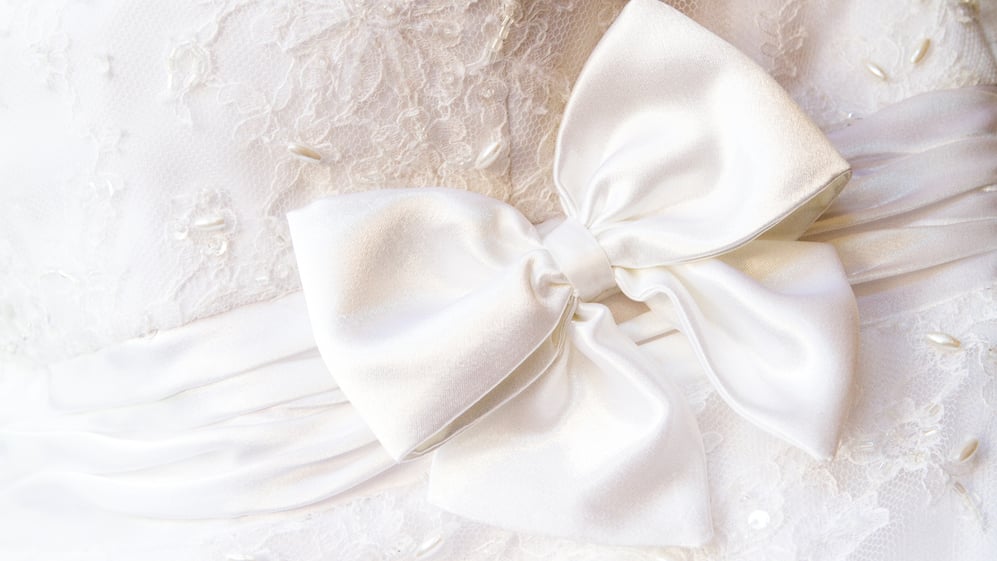While Jesus’ parable of the wedding garment is relatively brief, it presents two fundamental teachings of the Christian faith: God’s definitions of “good” and “bad” are vastly different from our own, and there is salvation only by grace through faith in Christ. I’ll include a few thoughts on Law and Gospel, some ideas for presenting this parable, and couple of song suggestions.
The Parable of the Wedding Garment: Matthew 22:10–14
And those servants went out into the roads and gathered all whom they found, both bad and good. So the wedding hall was filled with guests.
But when the king came in to look at the guests, he saw there a man who had no wedding garment. And he said to him, “Friend, how did you get in here without a wedding garment?” And he was speechless. Then the king said to the attendants, “Bind him hand and foot and cast him into the outer darkness. In that place there will be weeping and gnashing of teeth.” For many are called, but few are chosen.
This is the end portion of Jesus’ larger teaching of the wedding feast. His overarching point is that God prepared the kingdom of heaven for the Jews, His chosen people, always intending that it would be given to the Gentiles as well. However, many Jews would not receive it, rejecting its prophets and teachers and, especially, Jesus Himself. Seeing that many of the Jews reject Him, Jesus continues with the portion on the garment, broadening the message to apply to the Gentiles as well and stressing the importance of salvation through Jesus only.
Law
To the modern-day reader, the phrase “bad and good” in verse 10 may suggest that God divides people based on their behavior or innate worth. Remember that Jesus is talking to Jews and their leaders. Their understanding is that a good person is a Jew, faithful to the teaching of Moses and the Pharisees. Anyone else, then, is bad. This includes the Gentiles. Jesus is merely using their own language.
Unfortunately, many modern-day readers share the view of the Jewish leaders, including a fair number of Christians. In reality, no one is good except God Himself. Recall Psalm 14:3:
They have all turned aside; together they have become corrupt; there is none who does good, not even one.
And Mark 10:18:
And Jesus said to him, “Why do you call Me good? No one is good except God alone.”
One person may live a less destructive, more benevolent life when compared to another person. However, God compares us to Himself. Our failure as Christians is to regard ourselves and others by the world’s standards. We are to regard all people as equally in need of what God has to offer in Jesus Christ.
The wedding garment itself represents salvation by grace through faith in Jesus Christ. Verse 10 suggests that the wedding was populated with both “bad and good” people as the world defines. When the king comes in to look at the guests, what distinction does he make? He rejects no one for being “bad” but rather for their lack of wearing a wedding garment. As Christians, we reject no one. Instead, our goal is to follow the Lord’s call to reach out with the Gospel in order that the Holy Spirit would give each person the wedding garment of salvation through Christ.
Gospel
God’s work for us in His overwhelming love and mercy is represented in three parts of this parable. First, Jesus suffered and died to redeem the whole world. John 3:16 teaches this. Notice that the servants make no distinction between good and bad. Instead, the wedding banquet is intended for all.
Second, just like the servants who invite people to the wedding banquet, God’s Holy Spirit reaches out with the Gospel of salvation in Jesus Christ. What Jesus did on the cross is enough to forgive any sin. What’s more, God wants this salvation invitation to go out to all.
Third, God provides the wedding garment. We can assume that those attending the wedding feast are given garments upon entering. The Bible teaches that God’s Holy Spirit creates faith in the dead heart of the sinner, and through that faith brings forgiveness and eternal life. The wedding banquet is to be with God in heaven. God does it all.
Teaching Ideas
- To introduce the lesson, lead a discussion on what it means to be “good” and “bad.” How many bad things can you do before you are a bad person? How many good things do you have to do to change that status?
- Lead students around the classroom. Point out how the room appears clean at first glance. However, as you observe more closely, you find dirt, wear, and other imperfections. In the same way, some people may appear perfect, but in reality we all need what God has to offer in Christ.
- Bring in any one of these four items: a white baptismal gown, a confirmation robe, a white wedding gown, or a pastor’s robe. Explain that the white represents the purity of God, which we receive through faith in Jesus Christ.
Song Suggestions
Hymn numbers are for All God’s People Sing.
- “Go into the World” (hymn 101)
- “Go Tell It on the Mountain” (hymn 104)
- “His Banner over Me Is Love” (hymn 118)
- “Kids of the Kingdom” (hymn 150)
- “Sent Forth by God’s Blessing” (hymn 208)
- “You Have Put on Christ” (hymn 271)
Looking for suggestions on teaching other parables?













